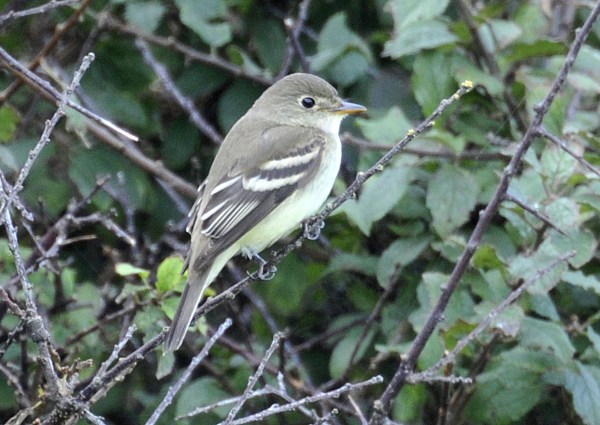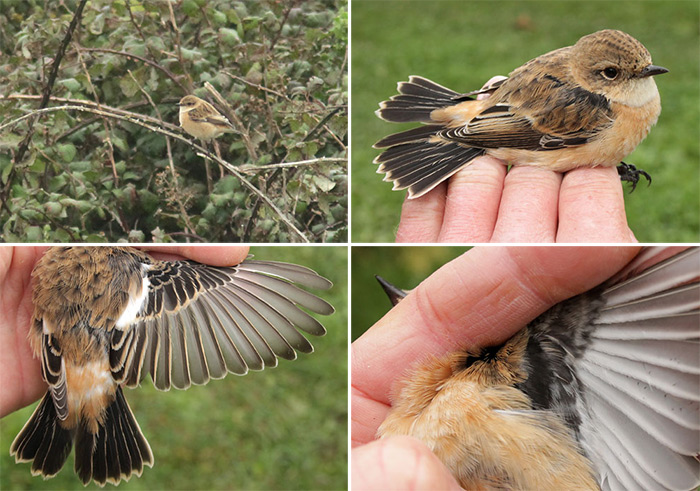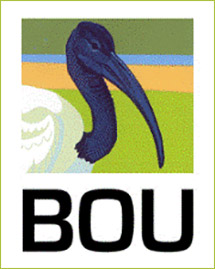Changes to the British List, Sept 2014
Alder Flycatcher, Eastern Grasshopper Warbler, Eastern Black Redstart, ‘Stejneger’s’ Siberian Stonechat all accepted to Category A of the British List
The British Ornithologists’ Union Records Committee (BOURC) has accepted the following to Category A of the British List:
Alder Flycatcher Empidonax alnorum
Nanjizal, Cornwall, 8-9 October 2008 (trapped, photographed).
This Nearctic species, breeding in North America and wintering in South America, was previously one of a subspecies pair of Traill’s Flycatcher. Both have been elevated to full specific status as Alder Flycatcher and Willow Flycatcher Empidonax traillii, based mainly on differences in song and call, but with some subtle plumage differences.
This created a challenge for BOURC when establishing the identity of this individual, despite it being trapped and biometrics being available, as no definitive calls were heard. The record required two circulations, before Willow Flycatcher could be eliminated and identification confirmed.
It should be placed after Eastern Phoebe Sayornis phoebe on the British List.

Eastern Grasshopper Warbler Locustella naevia straminea/mongolica
Fair Isle, 20 September 2012 (trapped, photographed, DNA analysis).
The individual could not be definitively assigned to subspecies, and so was accepted as being one of the two taxa straminea or mongolica.
L. n. straminea breeds in western Siberia to western China, wintering in the Indian subcontinent. L. n. mongolica breeds Kazakhstan to Afghanistan and western Mongolia, wintering in the Indian subcontinent.
Eastern Black Redstart Phoenicurus ochruros phoenicuroides/xerophilus/rufiventris
Dungeness, Kent, 7 November 1981 (trapped, photographed).
Breeds in central and eastern Asia, from the Tian Shan to Mongolia.
‘Stejneger’s’ Siberian Stonechat Saxicola maurus stejnegeri
Portland Bill, Dorset, 24-26 October 2012 (trapped, photographed, DNA analysis).
Breeds in the northern and central Asia.

Further details will be published as part of the BOURC’s 43rd report due to be published in Ibis in January 2015. Upon publication of these decisions in Ibis, the British List will stand at 597 species (Category A = 579; Category B = 8; Category C = 10).
BOU
10 September 2014






